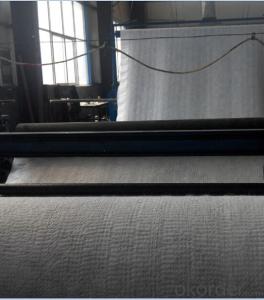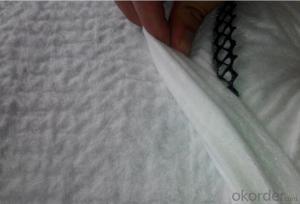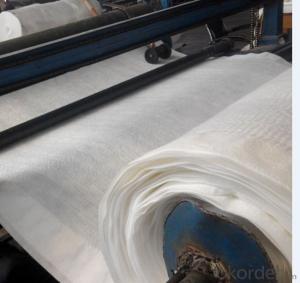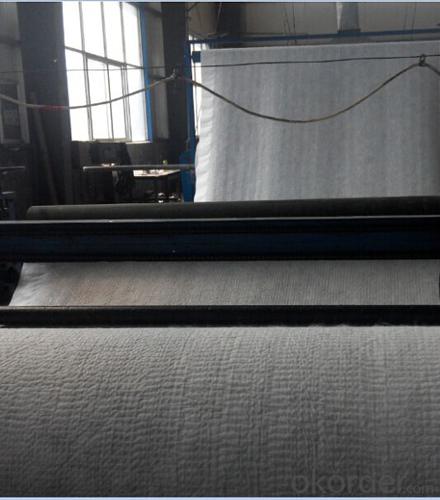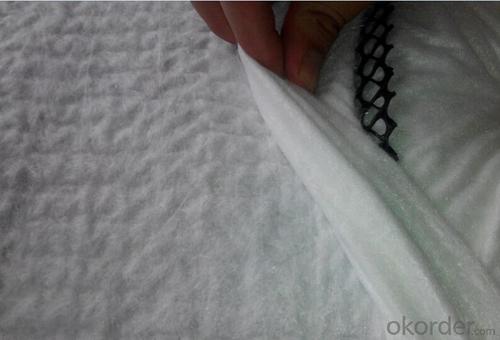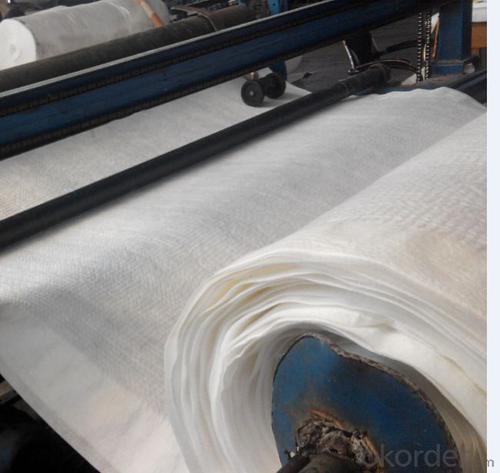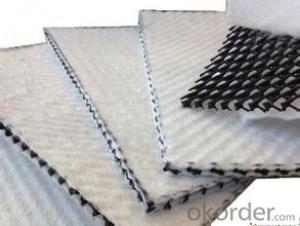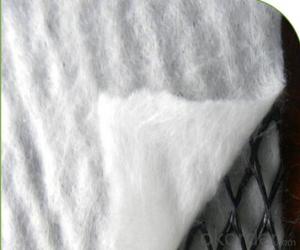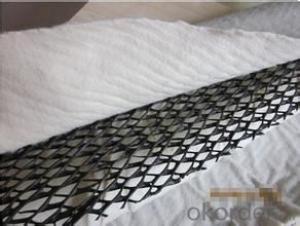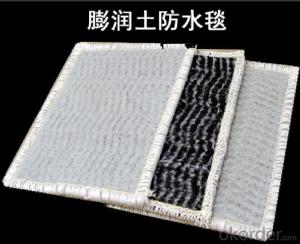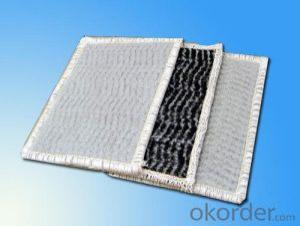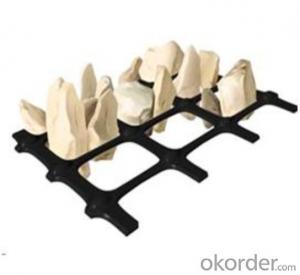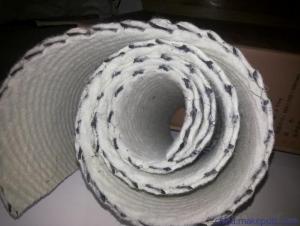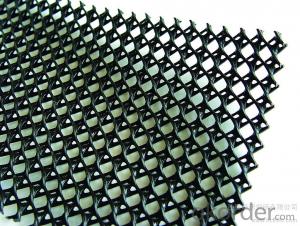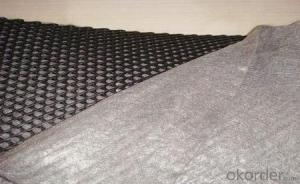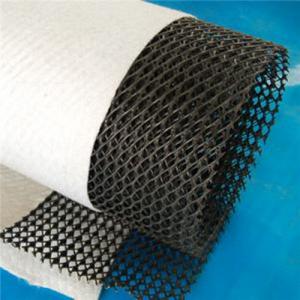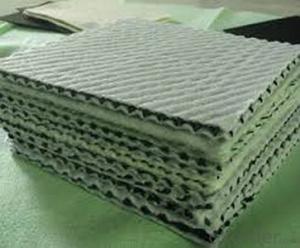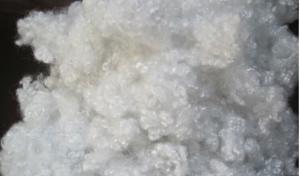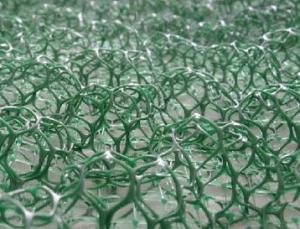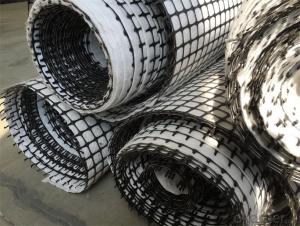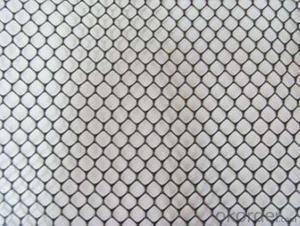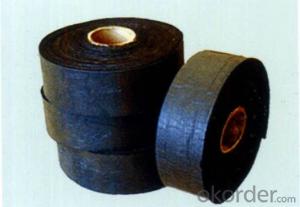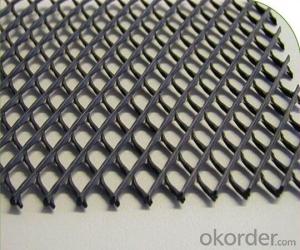Three-dimensional Drainage HDPE Network Composite Geotextile
- Loading Port:
- Qingdao
- Payment Terms:
- TT OR LC
- Min Order Qty:
- 2000 m²
- Supply Capability:
- 200000 m²/month
OKorder Service Pledge
OKorder Financial Service
You Might Also Like
Geocomposite Drainage
Brief Description:
Geocomposite drainage is a drainage system consisting of three-dimensioanal high-density polyethylene
geonet, with high permeability, compressive strength and tensile strength, combined on one or both sides with
a nonwoven polypropylene geotextile.
Features:
1. Three functions in one unit: filtration, drainage and protection.
2. The installation is simple and rapid comparing to traditional sand grains and gravel layer.
3. Cost-effective substitute for traditional drainage system provide savings on materials, transportation and in-
stallation.
4. Chemically resistant construcion provide long life in harsh environments.
Specifications and technical parameters:
Drainage network core | units | Specification | ||||
Unit weight | g/m2 | 750 | 1000 | 1300 | 1600 | |
Thickness | Mm | 5.0 | 6.0 | 7.0 | 7.6 | |
Hydraulic conductivity | m/s | kx10-4 | Kx10-4 | Kx10-4 | Kx10-4 | |
Elongation | % | 50 | 50 | 50 | 50 | |
Tensile strength (core netwaork) | kN/m | 8 | 10 | 12 | 14 | |
Geotextile | g/m2 | Heavier grades of geotextiles can be bonded to geonet on request | ||||
Usages:
In the railway, highway and other transportation infrastructure, drainage system safety and the service life
of the project and its have inseparable relationship, in which the geotextile material is an important part
of drainage system, the drainage effect of 3D composite drainage net is particularly notable. mainly
used for tunnels, municipal engineering, reservoir, revetment in drainage engineering.
FAQ
1. Which payment do you accept?
For you convinience,our payment can be L/C,TT
2. Is free sample available?
We can supply free samples if you need.
3. How about your quality?
We have strict quality control system, we make testing on incoming raw material and finished products. Your third party testing is also welcomed. With high quality, our products are used on government projects at home and abroad. Our product quality is accepted by clients from all over the world
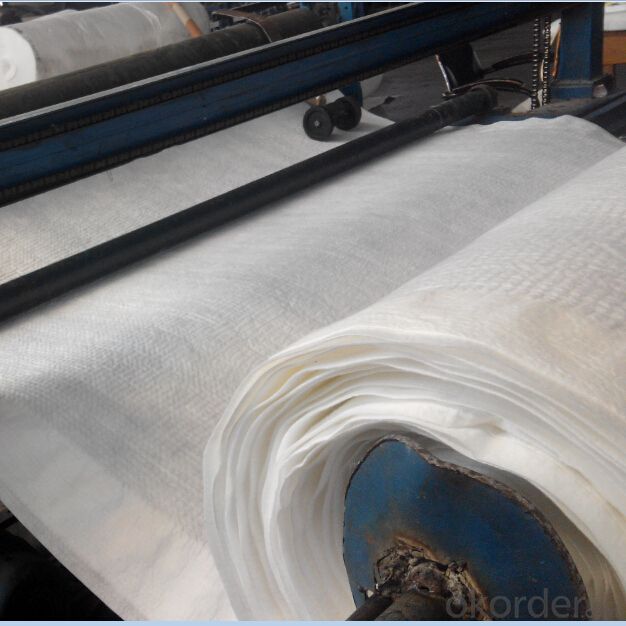
- Q: Why the ancient Chinese architecture to civil materials, while the use of stone in Europe it?
- Ancient China mainly lived in the northern Yellow River basin, and later gradually migrated to the south, and the Yellow River Basin and the original trees and less stone, so the majority of the main civil construction, and the European stone Hill more stone is also sufficient, many of the original is lean stone mountain Built, can be local materials, so the majority of stone construction
- Q: How are geocells used for erosion control on shorelines?
- Geocells are used for erosion control on shorelines by providing a stable and reliable system to reinforce the soil and prevent erosion. These three-dimensional honeycomb-like structures are filled with soil, creating a strong and permeable barrier against wave action and water currents. Geocells help to retain the soil and vegetation in place, reducing the impacts of erosion and providing long-term stability to shorelines.
- Q: Are earthwork products suitable for use in dam construction?
- Yes, earthwork products are commonly used and suitable for dam construction. Earthwork materials such as soil, rock, and clay are often utilized as fill materials for building dams. These products are chosen based on their engineering properties, including stability, permeability, and compaction characteristics, to ensure the durability and safety of the dam structure.
- Q: How do earthwork products contribute to land remediation and restoration?
- Earthwork products, such as soil, sand, and gravel, play a crucial role in land remediation and restoration. These products are used to fill and level contaminated or damaged land, creating a stable foundation for further remediation efforts. Additionally, earthwork products can be used to create berms, barriers, or containment structures that prevent the spread of pollutants and protect sensitive ecosystems. By providing the necessary materials for land regrading, erosion control, and vegetation establishment, earthwork products facilitate the rehabilitation of degraded land, ultimately restoring its functionality and ecological value.
- Q: Are earthwork products available in various colors and finishes?
- Yes, earthwork products are available in various colors and finishes.
- Q: Can earthwork products be used in sound barriers?
- Yes, earthwork products can be used in sound barriers. Earthwork products such as soil, rocks, and other materials can be used to construct sound barriers that effectively reduce noise pollution. These materials can be shaped and arranged to create a physical barrier that absorbs, reflects, and diffuses sound waves, thus providing a quieter environment.
- Q: What is the lifespan of geocomposite drainage systems?
- The lifespan of geocomposite drainage systems can vary depending on factors such as the quality of materials used, installation techniques, and the conditions in which they are used. However, with proper installation and maintenance, geocomposite drainage systems can have a lifespan of 25 to 50 years or more.
- Q: Can earthwork products be used for creating play areas for children?
- Yes, earthwork products can be used for creating play areas for children. These products, such as soil, gravel, or mulch, can be used to shape the terrain and create different play elements like hills, mounds, or pits. They can also be used to create safe and soft surfaces, such as sandboxes or cushioned areas, which are essential for children's play.
- Q: The Relationship between Water Absorption and Water Content in Civil Engineering Materials
- Application of water absorption in the water to absorb moisture in the air that the method to absorb moisture to the mass ratio or volume ratio of moisture absorption ratio
- Q: How do earthwork products help in soil stabilization?
- Earthwork products, such as geotextiles and geosynthetics, play a crucial role in soil stabilization. These materials are designed to improve the stability and integrity of soil, preventing soil erosion and enhancing its load-bearing capacity. By providing reinforcement and erosion control, earthwork products help to distribute and dissipate the forces exerted on the soil, reducing the risk of slope failure and ensuring long-term stability. They also promote the filtration and drainage of water, preventing the accumulation of excess moisture that can weaken the soil. Overall, earthwork products are essential in creating a strong and durable foundation for various construction projects and in preserving the integrity of natural landscapes.
Send your message to us
Three-dimensional Drainage HDPE Network Composite Geotextile
- Loading Port:
- Qingdao
- Payment Terms:
- TT OR LC
- Min Order Qty:
- 2000 m²
- Supply Capability:
- 200000 m²/month
OKorder Service Pledge
OKorder Financial Service
Similar products
Hot products
Hot Searches
Related keywords
